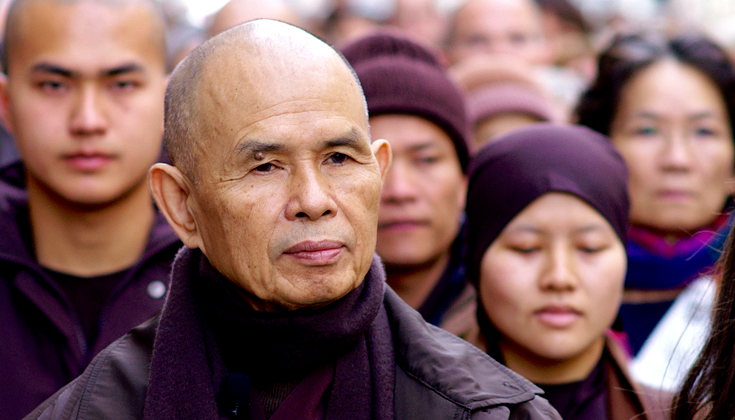Sister Chan Khong: Under the Bombs
When I went to the United States to explain the suffering of the Vietnamese people and to plead for peace in Vietnam, I saw a woman on television carrying a wounded baby covered with blood, and suddenly, I understood how the American people could continue to support the fighting and bombing.… The scene on television looked like a performance. I realized that there was no connection between experiencing the actual event and watching it on the TV screen while sitting at home in peace and safety. People could watch such horrible scenes on TV and still go about their daily business—eating, dancing, playing with children, having conversations. After an encounter with such suffering, desperation filled my every cell. These people were human beings like me; why did they have to suffer so? Questions like this burned inside me and, at the same time, inspired me to continue my work with serene determination. Realizing how fortunate I was compared to those living under the bombs helped dissolve any anger or suffering in me, and I was committed to keep doing my best to help them without fear.
From Learning True Love, by Sister Chan Khong (Parallax).
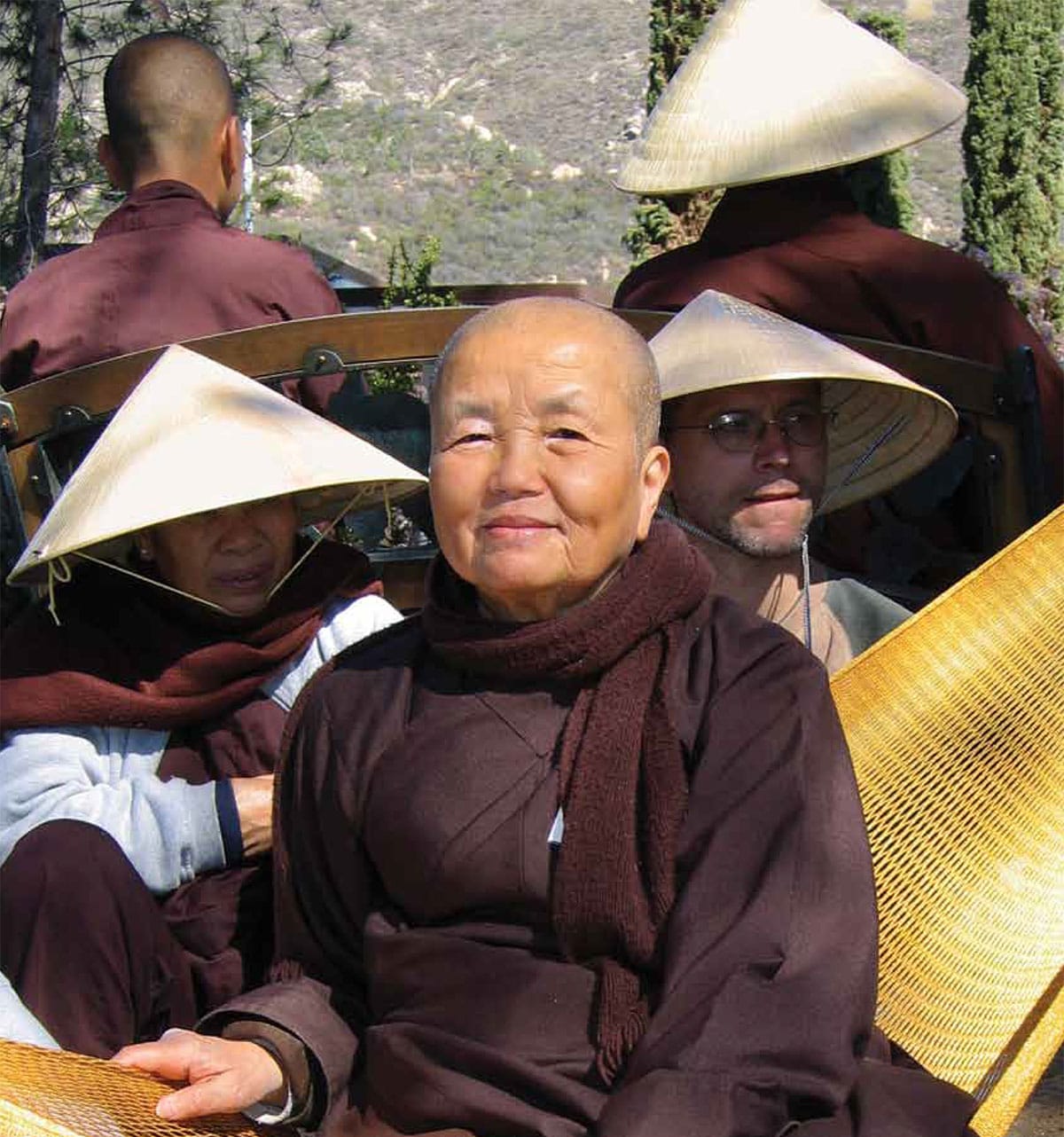
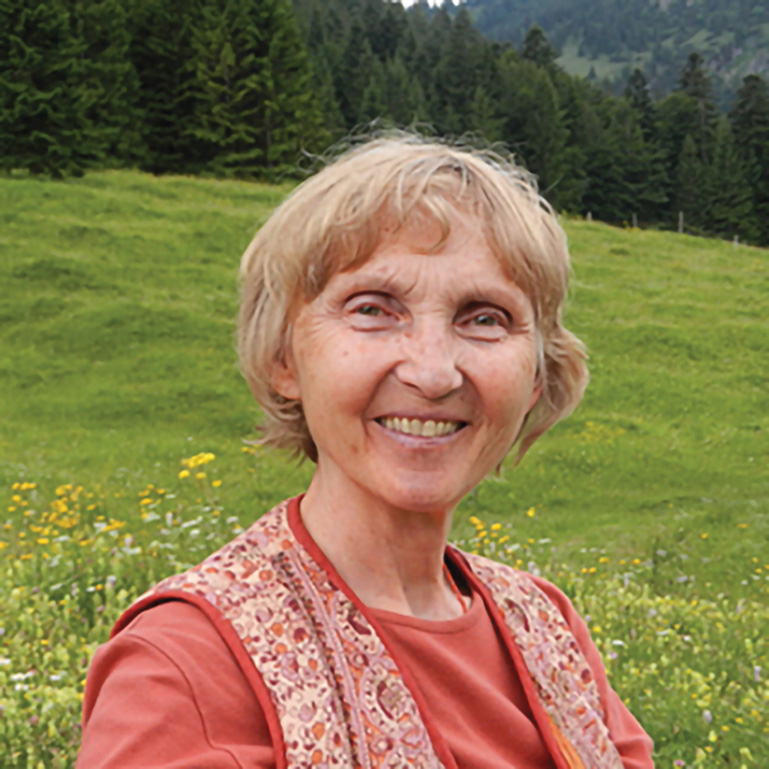
Annabelle Zinser: A Hand to Hold
One of the practices that touched me the most when I was in Plum Village was the practice of walking hand in hand with someone you don’t know during walking meditation. At first, I was just watching others do this and I felt too shy to do it myself. I felt a subtle tinge of loneliness when I saw how many people were taking part in this practice.
At one of the long summer retreats in Plum Village, I spoke publicly about spending time with my mother during the last few months of her life. A nun who felt touched by my story came over to me at the start of walking meditation. She bowed and took my hand. She did it in such a clear and straightforward way that I felt very happy as we walked together with Thich Nhat Hanh and the sangha around the lotus pond. I hardly knew her; there had even been a minor incident earlier when I caught myself judging her because she had behaved in a way that I didn’t approve of. Now she had come to me, had taken my hand, and we were walking together as if we were best friends. To simply feel her warm hand and to settle into every step taken together very mindfully was enough to let go of any prejudice I might have harbored against her.
The clarity and solidity the nun expressed as she bowed and took my hand taught me a lot. It showed me how easy it can be to let go of shyness and feelings of loneliness. Since that experience, I’ve often invited others to walk hand in hand with me during walking meditation.
From Small Bites: Mindfulness for Everyday Use, by Annabelle Zinser (Parallax).
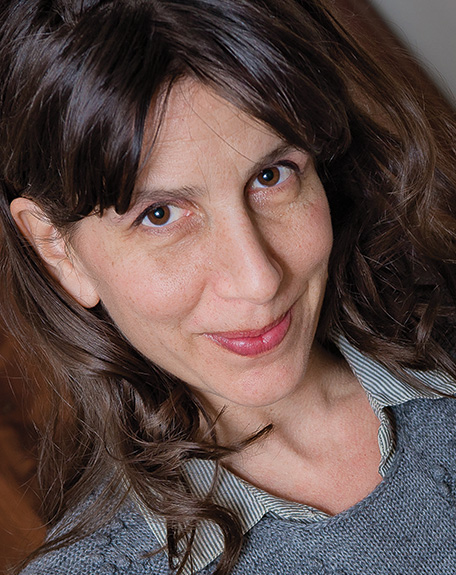
Gail Silver: How to Model Meditation for Your Kids
Children will come to meditation organically if they regularly see their parents practicing. With this in mind, next time you settle in to sit, you might sink into the family room sofa instead of running off to a secluded room and bolting the door behind you. For added allure, you might position yourself to face a window. Little ones, wondering what you’re watching, will snuggle in your lap and experience the comforting rhythm of your breath. Whether taking in a still blue sky or the business of life passing by, their breath is likely to align with yours.
Conscious modeling is more complex when it comes to older children who may not want to emulate anything their parents do. However, letting them experience the way meditation favorably impacts you, especially as it relates to their life, can pique their interest and motivate them to explore the practice. Once they’ve witnessed meditation’s transformative effect on you and experienced how it enables you to communicate more compassionately with them, you might include them in conversations in which you share an anecdote about how meditation has realigned your perspective on a particular stressor, or has improved your ability to communicate with a difficult colleague, or provided you with a renewed ability to manage a specific task.
Whatever you do, keep it fun.
From “The Family That Meditates Together…,” by Gail Silver (Lion’s Roar, January 2019).
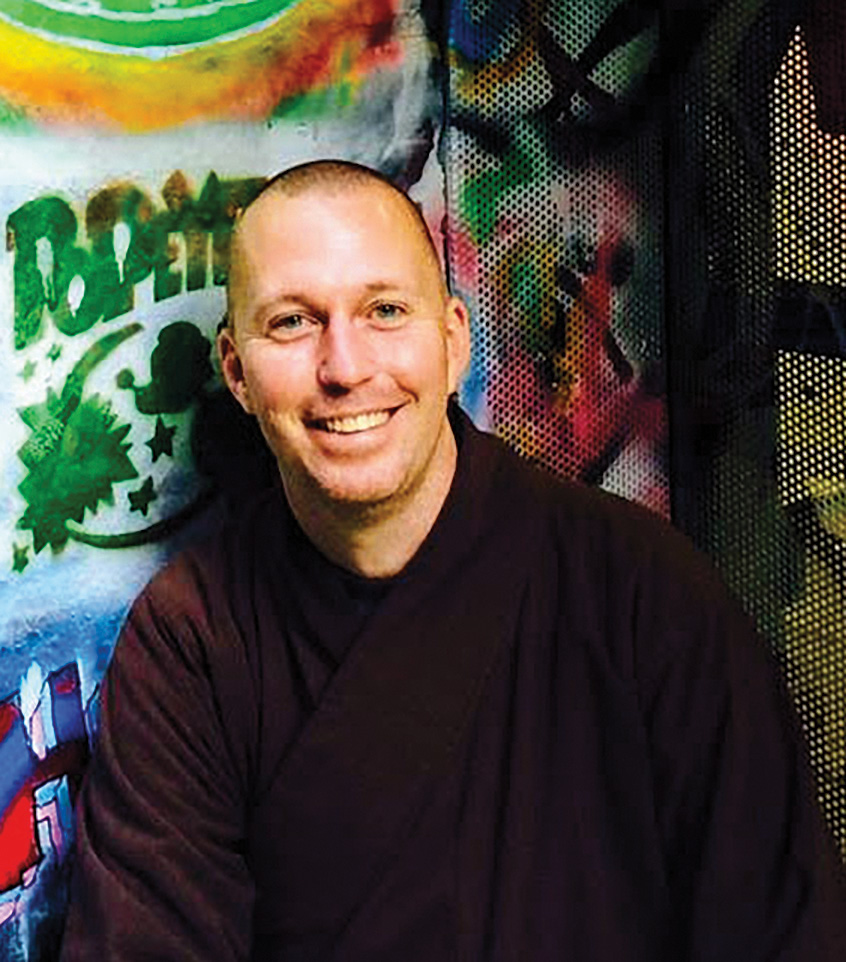
Brother Phap Hai: I Have Arrived
In Plum Village centers all over the world, the word that we hear most often is “arriving.” In 2000, I was invited to travel to Australia to help offer retreats and Days of Mindfulness in various cities. Our delegation flew from Bordeaux to Paris, and then from Paris to Dubai. From Dubai we flew to Ho Chi Minh City and then to Sydney. By the time we landed in Sydney, we had been traveling for over forty hours. I will never forget walking up the stairs to my room: the suitcases I was carrying seemed so heavy. Stepping into my room, I placed them down and a big “aahhh” rose from the core of my being: a moment of relaxation, a moment of bliss. Until that moment, I hadn’t realized how tight and tense my body had become during the long journey. My whole body relaxed; I felt my breath flowing in and out. I felt wonderful. I had arrived at my destination.
The practice of arriving is a practice of allowing that “aahhh” to manifest in each moment—each breath, each step. To be fully here. This one practice alone is worth a lifetime of practice. I call it “ahhh-riving.”
From Nothing to It: Ten Ways to Be at Home with Yourself, by Brother Phap Hai (Parallax).
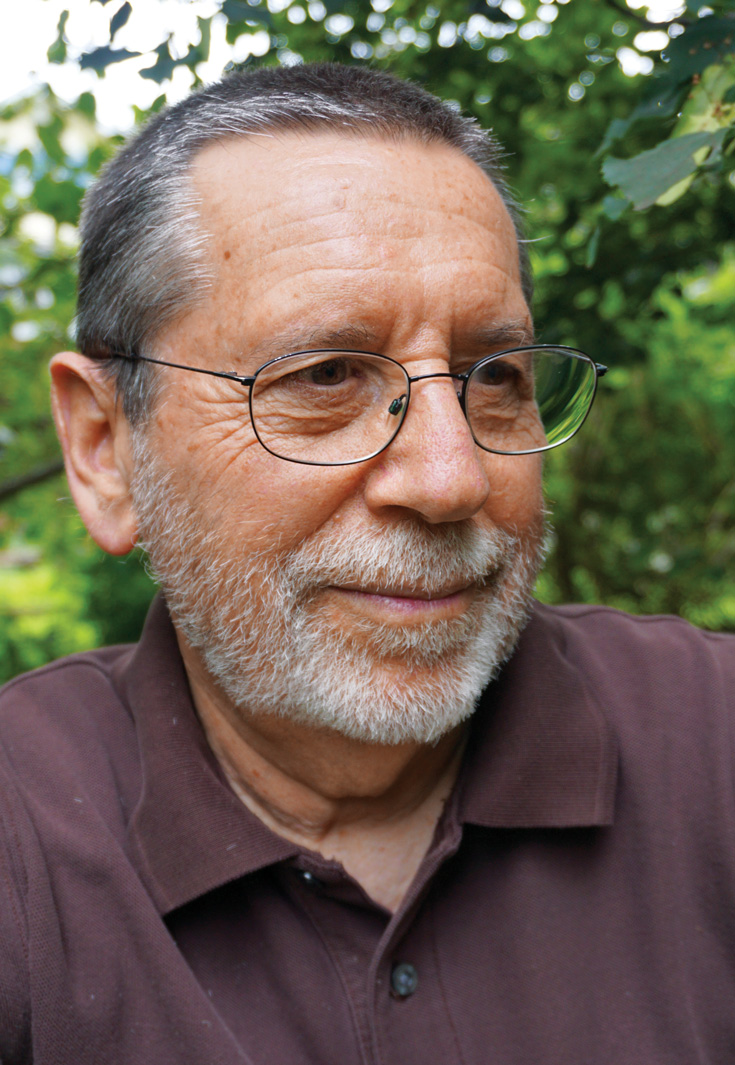
Mitchell Ratner: Someone to Blame
Even though it doesn’t work, there are powerful forces in most of us leading us to blame others. One “benefit” in blaming this way is that it reduces complexity. A group conflict, or a conflict in a relationship, almost always has a long, complicated history of contexts and actions that condition other contexts and actions. In highlighting one cause and ignoring a multitude of contributing causes, we create a world of villains and heroes, or villains and victims.
Another “benefit” of blaming others is that it takes responsibility for the distressing condition away from us and makes others responsible. Often, in our distress, we simply ignore the ways we have acted that have conditioned someone else’s actions. In a relationship, we may have grown distant, pulling back from emotional engagement, but then, during a dispute over a miscommunication, blame it all on our partner for not bringing up the issue earlier. Group dynamics can be even more complex. We can decry individual acts of illegal behavior, or institutional violence (such as the brutal behavior of guards at checkpoints) without seeing how we are linked to the systematic deprivation or inciting actions that condition these responses.
From “Villains and Victims” in All the Rage: Buddhist Wisdom on Anger and Acceptance (Shambhala).
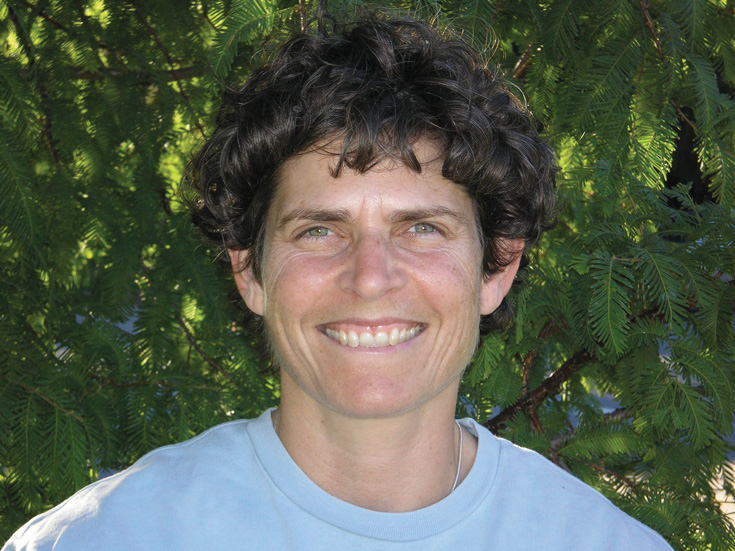
Zachiah Murray: The Garden Path
Mindfulness is the awareness of what is around us and within us in the present moment. Looking deeply, and being with what is, frees us from getting caught in the past or the future. When we garden, the details of nature call to life all of our senses, grounding us in the present moment. While weeding, for example, we use our sight to discern the beautiful glistening leaves of the native, noninvasive redwood sorrel (Oxalis oregana) from the flat, green, stippled leaves of the invasive sour grass (Oxalis pes-caprae L.) We use our sense of taste as we nibble on a basil leaf or bite into a freshly picked, sun-warmed peach. We feel nature’s touch as we are gently brushed by the summer’s refreshing breeze upon our skin, cooling the perspiration of our labors of love in the garden. Attuned to our breath, we can smell the arrival of the seasons upon the wind. As we see, hear, smell, taste, and feel nature’s details, we become more present, and compassion and love grow within us.
From Mindfulness in the Garden: Zen Tools for Digging in the Dirt, by Zachiah Murray (Parallax).
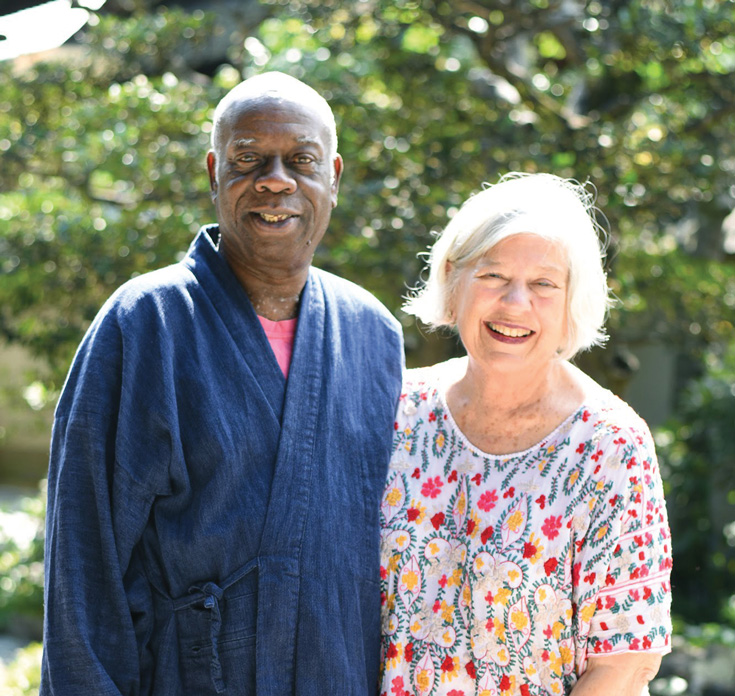
Peggy Rowe Ward and Larry Ward: Your Relationship Can Flower
When we’re upset with someone, we have a tendency to punish him or her. We do this in many ways: sometimes by withholding attention, sometimes by withholding words. This only escalates our own suffering. Withholding water doesn’t help a garden grow, and withholding our attention and love will not help our relationship flower.
The more we water the positive seeds in our partner, the more we ourselves grow, and the more our feeling of spiritual wealth and our capacity for generosity increase. In Buddhist teachings, the practice of giving is referred to as transcendent generosity, the first of the six paramitas or perfections. The others are virtue, patience, effort, meditation, and wisdom.
The practice of generosity can be the first step in restoring a relationship. Generosity involves the power of surrender, of letting go. There is a well-known plant in Vietnam called he (pronounced “hay”) that’s a member of the onion family. This plant is delicious in soup, fried rice, and in omelettes. It grows back in less than twenty-four hours after it’s cut. The more you cut the plant, the bigger and stronger it becomes. The paramita of generosity is like this. When we give freely, we receive freely and fully.
From Love’s Garden: A Guide to Mindful Relationships, by Peggy Rowe Ward and Larry Ward
(Parallax).
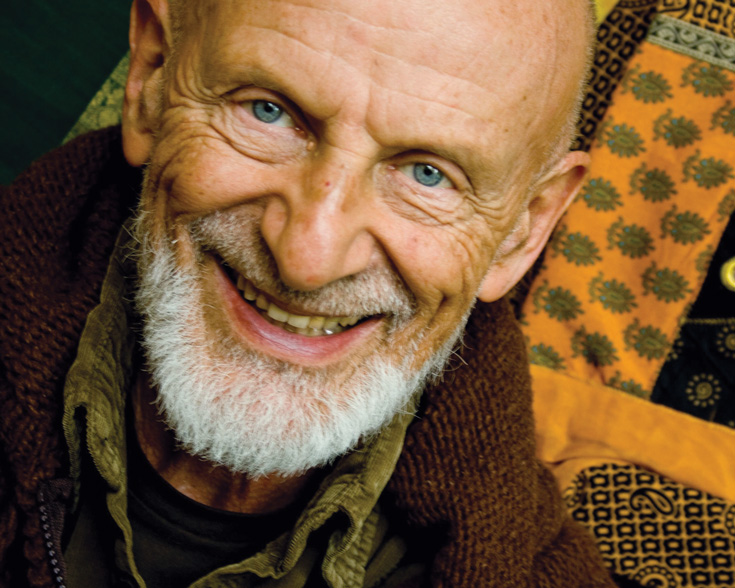
Joseph Emet: Tea Meditation
Here is a homemade koan for drinking tea: Who is enjoying this tea?
Ask yourself this question with each sip. When you encounter that person, let them go. You need a break from their story now and then. Otherwise your tea break will not really be a break at all.
Constantly rehearsing the story of our roles, obligations, and commitments wears us down. Yes, we may be mothers, doctors, servers, or office workers, but at the core, we are more than these things. We are “breath-breathing humans,” as the Sufi poet Rumi said. Whatever your story, you are more than that story. Get in touch—and stay in touch—with the breath-breathing human you are as you enjoy your tea.
“Just this,” remind yourself with each sip. “Just this.” Sit and breathe like a flower in a meadow, enjoying the sun.
Paradoxically, taking a true break is more effective than using the time to think of your next move. As you disengage even momentarily from your surface mind, you access deeper layers of your self to include in your discourse or journey. That allows you to talk, move, and act more authentically as a whole person.
Drinking tea is a great opportunity to practice stillness in motion, our natural condition on the spinning earth.
From “How to Practice Tea Meditation,” by Joseph Emet (Lion’s Roar, May 2017).
